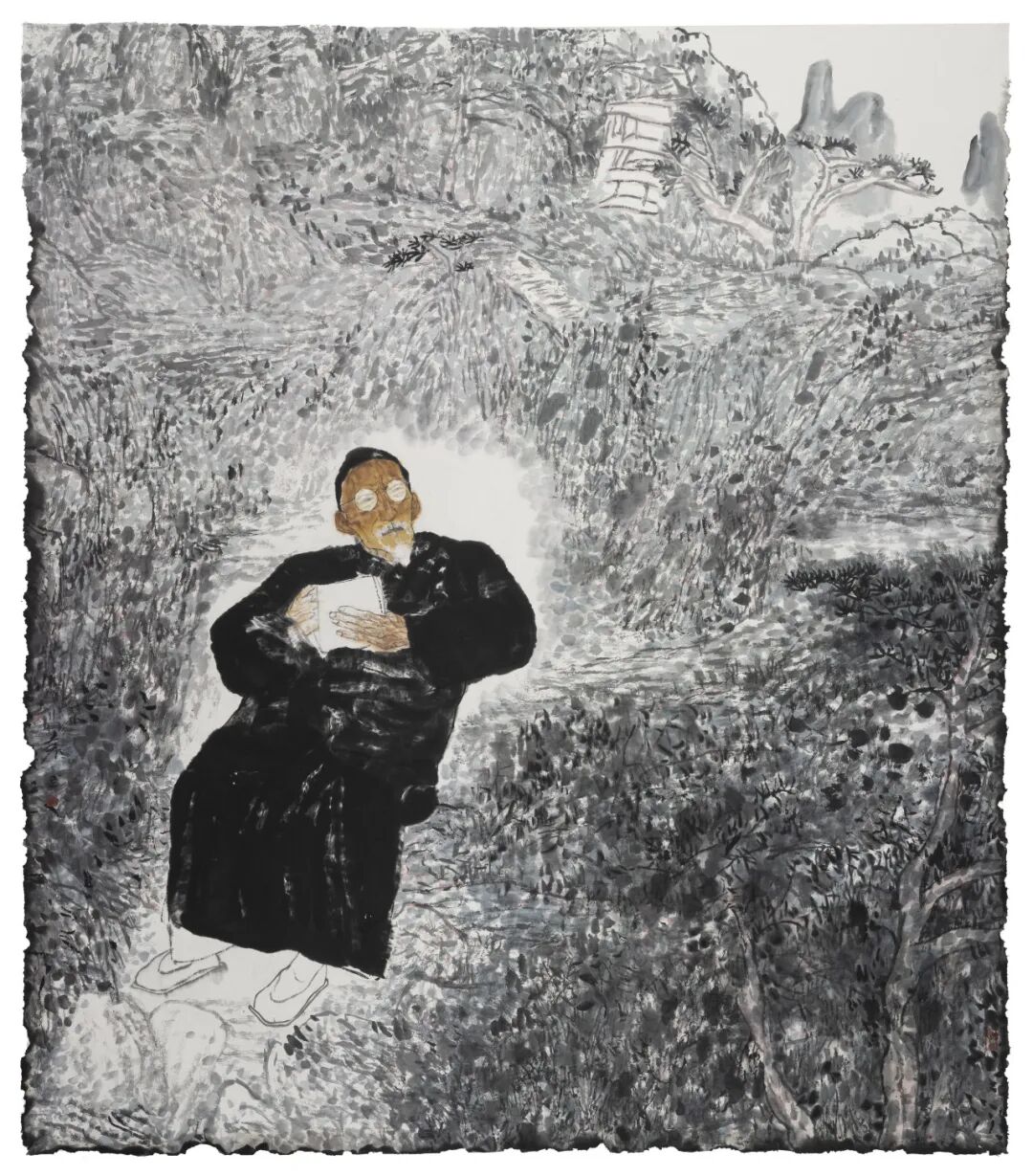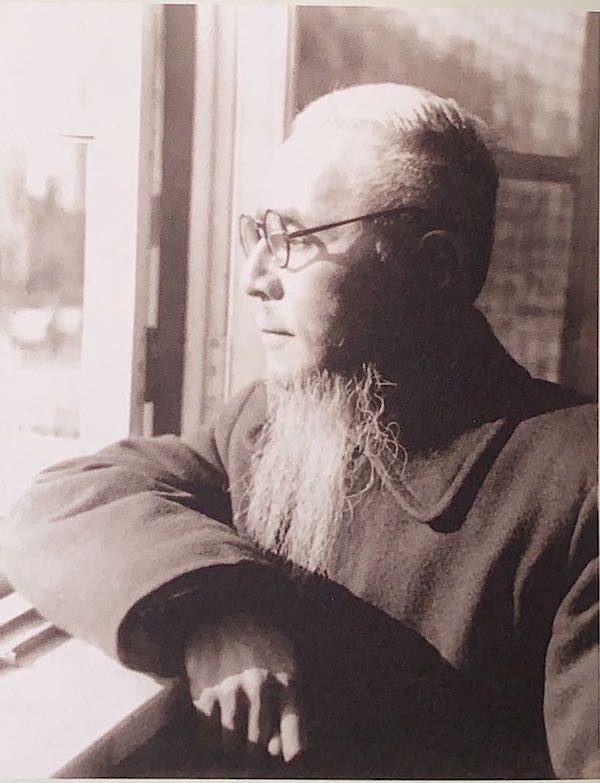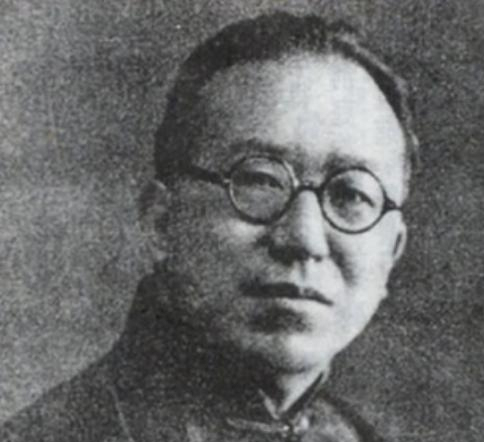
Jiang Hanting (1904-1963) was one of the "Four Great Masters" of the Shanghai School of Flower-and-Bird Painting in modern times, and also one of the first painters established at the Shanghai Academy of Chinese Painting. The "Collection of Flower-and-Bird Paintings by Jiang Hanting," recently published by Shanghai Painting and Calligraphy Publishing House, systematically reviews Jiang Hanting's life, social interactions, and artistic creations.
Through extensive research and consultation, the author presents for the first time a clear picture of Jiang Hanting's complex relationships with various figures, clarifies his interactions with teachers and friends, and provides a more three-dimensional view of the artist's creative work. It also offers a glimpse into the ecology of Shanghai's calligraphy and painting art scene in the mid-20th century.

Jiang Hanting's main character relationship diagram
Jiang Hanting was one of the "Four Great Masters" of the Shanghai School of Flower-and-Bird Painting in modern times, and also one of the first painters established at the Shanghai Academy of Chinese Painting. By consulting historical materials and clarifying his relationships with teachers and friends, we can gain insight into the landscape of Shanghai's calligraphy and painting art circles in the mid-20th century.
First, of course, are Jiang Hanting's family members: his father was Jiang Xizhou, and his mother was surnamed Ai. He also had a younger brother and sister; his brother's name was Shi Chang, and his sister's name is unknown. She married the famous Pingtan artist Huang Yi'an, whose given name was Yuan, courtesy name Guanqun, and early name was Huang Yi'an. Her ancestral home was Huangshan, Anhui, and she was born in Taicang in 1913. Her father was Huang Libin. Jiang Xizhou appreciated him and introduced him to Liu Jieyu (a farmer from Tiantaishan) to study calligraphy. Because of his love for Pingtan, he received guidance from Zhu Lan'an, Wang Gengxiang, and Xie Hongfei, gradually developing his own unique style. He also studied seal carving under Deng Sanmu. Chen Julai's *Anchi Renwu Suoyi* (Anecdotes of People in Anchi) contains a dedicated article about him. There was also a cousin, Jiang Shilin (1920-2014), a member of the China Democratic National Construction Association. He was a member of the Shanghai Artists Association, the Shandong Artists Association, and the Shanghai Municipal Research Institute of Culture and History. He worked in art design and arts and crafts advertising design at the Shanghai Glass and Enamel Company, the Shanghai Zhonghua Enamel Factory, and the Jinan Enamel Factory, and was also skilled in painting. The eldest daughter, Jiang Shenghua, inherited the family's artistic tradition and later became a painter at the Shanghai Chinese Painting Academy. Her husband is the famous director Li Zhuoyun, who is also skilled in calligraphy and painting, and is especially proficient in bamboo carving.

A family reunion at the Jiang residence (Jiang Hanting is in the middle of the back row).
In 1919, Jiang Hanting's father arranged for him to study under Tao Songxi, a renowned flower-and-bird painter from Changshu. His fellow students included Dou Ziyu and Shen Xiaoqin. Later, Li Yongsen also became a student of Tao Songxi. Li Yongsen was a lifelong friend of Jiang Hanting; the two were neighbors, attended primary and secondary school together, and later both worked in Shanghai, maintaining frequent contact. Li Yongsen's wife, Shao Liangyun, later also became Jiang Hanting's student. In 1946, when the Suzhou Academy of Fine Arts reopened, Li Yongsen became the vice-principal of its Shanghai branch and established a specialized course in traditional Chinese painting, hiring Jiang Hanting to teach flower-and-bird painting. This was Jiang Hanting's small artistic circle during his early years of learning to paint.

Young Jiang Hanting and his senior Shen Xiaoqin pose for a photo.
Jiang Hanting's circle of friends in the art world expanded after he moved to Shanghai with his father in 1924. There, he became a student of Li Zuishi, alongside Xu Bangda and Cai Xian (Zhenyuan). Li Zuishi was quite influential in Shanghai's calligraphy and painting circles at the time, known as one of the "Two Stones" alongside Zhang Shiyuan, and was famous for his mastery of the "Four Wangs" style of landscape painting. Although Jiang Hanting was somewhat reserved at this time, Huang Taixuan, a key figure in promoting the Mandarin Duck and Butterfly School, barely spoke when he first met Jiang at Li Zuishi's home. Even Xu Wanping later wrote in a newspaper that "he was taciturn and not good with words; those who interacted with him often misunderstood him and found him difficult to approach. However, once you became familiar with him, he was very casual and not pretentious at all..."
However, Li Zuishi greatly admired Jiang Hanting and mentored him extensively. He not only guided him to study the landscape painting styles of Wang Shigu and Xi Gang, but also, recognizing Jiang Hanting's talent for flower-and-bird painting, instructed him to practice sketching from life after mastering the techniques of the ancients, especially Hua Xinluo. This is why Jiang Hanting earned the reputation of "the Hua Xinluo of our time." Furthermore, Li Zuishi's friend Zhang Shiyuan was particularly close to Jiang Hanting, frequently interacting with him. Zhang Shiyuan also helped Jiang Hanting when he faced financial hardship after his father's death, advising him to study the style of Xu Gu to alleviate his poverty. Through Zhang Shiyuan's connections, Jiang Hanting was able to view and copy many of Xu Gu's works from collectors such as Pang Laichen and Qian Jingtang, and quickly became almost indistinguishable from them. His work became highly sought after, with collectors vying to buy and collect it, earning him the nickname "Jiang Xu Gu."
As Jiang Hanting's painting skills matured, his recognition grew, and his influence gradually expanded from Shanghai to the surrounding areas. In mid-March 1936, he traveled from Changshu to Suzhou, intending to visit his fellow student Cai Zhenyuan before returning to Shanghai. Coincidentally, Cai Zhenyuan and Wu Yisun were preparing to hold an exhibition in Wuxi under the name of the Red Bean Painting Society, and invited Jiang Hanting to participate. Since Jiang Hanting was unprepared, he created over a dozen works in Cai Zhenyuan's studio. Furthermore, the people Jiang Hanting associated with in Suzhou are quite intriguing. Besides art figures such as Cai Zhenyuan, Liu Junran, Tan Weide, Wu Yisun, and Wu Zishen, he also associated with Hua Zhongqi, the owner of Gu Zhai, a gallery similar to a modern-day art gallery that could sell his works; Zhang Shuliang, the founder of the Suzhou Mingbao newspaper, who acted as a media outlet; and Xu Juebo, a jeweler who was likely a buyer of his works. This demonstrates that the circulation and management of art at that time was already quite mature, forming a healthy ecosystem.
Incidentally, it's worth mentioning that Tan Weide, whom Jiang Hanting met in Suzhou, was a renowned bamboo carver. It's unknown whether this explains Jiang Hanting's later extensive research into bamboo carving. Other famous bamboo carvers, such as Sheng Bingyun, Zhi Ci'an, and Sun Gengguan, all had dealings with Jiang Hanting. Although existing written records don't show direct contact between him and Jin Xiya, the existence of numerous fan ribs drafted by Jiang Hanting and carved by Jin Xiya suggests they may have had some interaction. Furthermore, Jiang Hanting's son-in-law, Li Zhuoyun, was also skilled in bamboo carving. It was under Jiang Hanting's guidance that he first taught Li Zhuoyun to "take a piece of imported umbrella steel rib, quench and polish it himself, and make a pointed knife, a round knife, a curved groove knife, and a single-edged short blade on which he would draw flowers, birds, insects, and fish… He also gave detailed instructions on the techniques of using the knife. In addition, he asked me to use a large needle for nailing, cut off the tip, and make a very small carving knife, specifically for carving intricate details."

Bamboo carving works drafted by Jiang Hanting
In 1941, Jiang Hanting took Zhang Zhongyuan as his student. Zhang Zhongyuan was the young master of the "Zhang Wanli Woodware Shop," a wealthy business in Shanghai during the 1930s. He was passionate about Peking Opera and calligraphy and painting, and studied under Zhou Xinfang, the founder of the Qi School of Peking Opera. Later, he married Zhou Xinfang's daughter, Zhou Caiping. Therefore, Jiang Hanting's circle of friends included people from the theater world. For example, Zhou Xinfang later became Jiang Hanting's student to learn flower and bird painting. Moreover, Zhang Yipeng, whose father was the famous Peking Opera master Gai Jiaotian, is also listed in the "Collection of Fellow Students of the Difang Painting Society" in the 1947 Art Yearbook.

In 1945, at the request of a friend, he painted "Peach and Mushroom Longevity Painting" for Zhou Xinfang's fifty-second birthday.
In 1943, Zhang Zhongyuan opened the Daguan Bonsai Company (Daguan Art Garden), located at the intersection of Haiyuan No. 3, Haige Road (now Huashan Road) and Shanzhong Road (now Changshu Road). It was managed by Jiang Hanting and Tao Hanying, and Zhao Shuru, Gao Yehou, Ding Fuzhi, Hu Zuoqing, Lang Jingshan, Wu Yezhou, Wang Fu'an, Yao Yuqin, Zhang Shiyuan, Ge Shuzheng, Hu Boxiang, and Ren Cixiang were invited to provide appraisals. In 1944, Daguan Garden Co., Ltd. was established (No. 354, Jing'an Temple Road, now the intersection of Nanjing West Road and Huangpi South Road). The opening ceremony was officially held on December 24, with Zhang Zhongyuan as general manager and Jiang Hanting and Qian Huafu as directors of the calligraphy and painting department. On the opening day, numerous calligraphers, painters, and celebrities from the entertainment industry, including Ding Fuzhi, Fu Tienian, Wang Fu'an, Yao Yuqin, Gao Yehou, Huang Ainong, Shang Shengbo, Zhao Shuru, Huang Taixuan, Wang Danfeng, Tong Zhiling, Hu Feng, Ouyang Sha, Li Yuru, and Li Rongfang, were invited to unveil the plaque and cut the ribbon. Shortly after its opening, the Grand View Garden established the "Grand View Gathering," a dedicated space for calligraphy and painting exhibitions and gatherings of literati. During that period, Jiang Hanting cultivated a wide circle of friends, forging deep friendships with many renowned calligraphers and painters in Shanghai.

On December 23, 1944, the Shen Bao newspaper published an advertisement for the opening ceremony of the Grand View Garden.
After the founding of the People's Republic of China in 1949, Jiang Hanting was first admitted to the East China Artists Association (later reorganized into the Shanghai Branch of the China Artists Association, now the Shanghai Artists Association). Later, the Preparatory Committee of the Shanghai Chinese Painting Academy selected him as one of the first batch of painters. He also joined the China Democratic Party of Peasants and Workers through the introduction of Wu Hufan and attended the Second Shanghai Municipal Committee of the Chinese People's Political Consultative Conference. Many of his friends from the calligraphy and painting circles became his colleagues in the academy, and their relationships naturally became closer. In particular, at the end of 1958, the Shanghai Chinese Painting Academy prepared to compile a set of textbooks on the basic techniques of flower-and-bird painting. In November 1959, the creation of "Flower-and-Bird Painting Manual" was officially launched. Jiang Hanting and the academy's flower-and-bird painting group painters Tang Yun, Chen Peiqiu, Lu Yifei, Chen Qiucao, Sun Xueni, Wang Geyi, Zhang Dazhuang, Wu Qingxia, Zhang Shoucheng and others began to compile "Flower-and-Bird Painting Manual" together. It was completed in early 1961, with a total of 122 paintings, and was published in May.
Of course, because Jiang Hanting was humble and enthusiastic, he had a good relationship with other painters in the academy. For example, Wu Hufan had a lot of interaction with him as early as the 1940s. Many of Jiang Hanting's "Hundred Birds and Hundred Flowers" scrolls and albums have Wu Hufan's introductory and postscript, and he even wrote a couplet to praise Jiang Hanting for taking on so many students.

Wu Hufan presents a seven-character couplet to Jiang Hanting
For example, Jiang Hanting enjoyed drinking and had a square seal in red ink that read "Drunk on the 29th of January." Tang Yun was also a good drinker, so they were kindred spirits and often drank together. Moreover, they both studied the flower-and-bird painting style of Hua Xinluo, so they naturally appreciated each other, exchanged artistic ideas, and often collaborated, complementing each other perfectly. They even planned to hold a collaborative painting exhibition, with Jiang Hanting painting the birds and Tang Yun adding the scenery. Unfortunately, Jiang Hanting passed away too early and could not fulfill his wish.

Tang Yunjiang and Han Ting collaborated on "Birds Gathering at Willow Pond" in 1956.

In 1958, Tang Yun, Zhang Dazhuang, Lu Yifei, and Jiang Hanting, known as the "Four Dan Actresses," collaborated on the painting "Autumn Willows and Goldfish."
There were many other seal engravers, and although there are no written records of their interactions, the extant seals used by Jiang Hanting clearly show their connections and friendships, such as Chen Julai, Ye Luyuan, Lai Chusheng, Bai Jiao, Wang Geyi, Fang Jiekang, Deng Sanmu, and so on.

Jiang Hanting's partial seal
Of course, Mr. Jiang Hanting's circle of friends extended far beyond what was mentioned above. For example, he had a very good relationship with Xu Wanping and Zhou Lianxia. After Jiang Hanting created his first long scroll painting of "One Hundred Birds," Xu Wanping published a series of articles titled "A Masterpiece of One Hundred Birds! Jiang Hanting" in the Oriental Daily for six consecutive days. He also visited Zhu Qizhan's Letian Painting Studio together with Zhang Shiyuan. Furthermore, he was very close to his neighbor Zhang Leping, who lived on Wuyuan Road, and they often had drinks together.
We hope that more new information will emerge to continuously supplement the details of Jiang Hanting's relationships with teachers and friends, so that we can gain a deeper understanding of Jiang Hanting's artistic world.

Book cover of "Jiang Hanting's Collection of Flower and Bird Paintings" by Wang Binzhi, published by Shanghai Calligraphy and Painting Publishing House.


